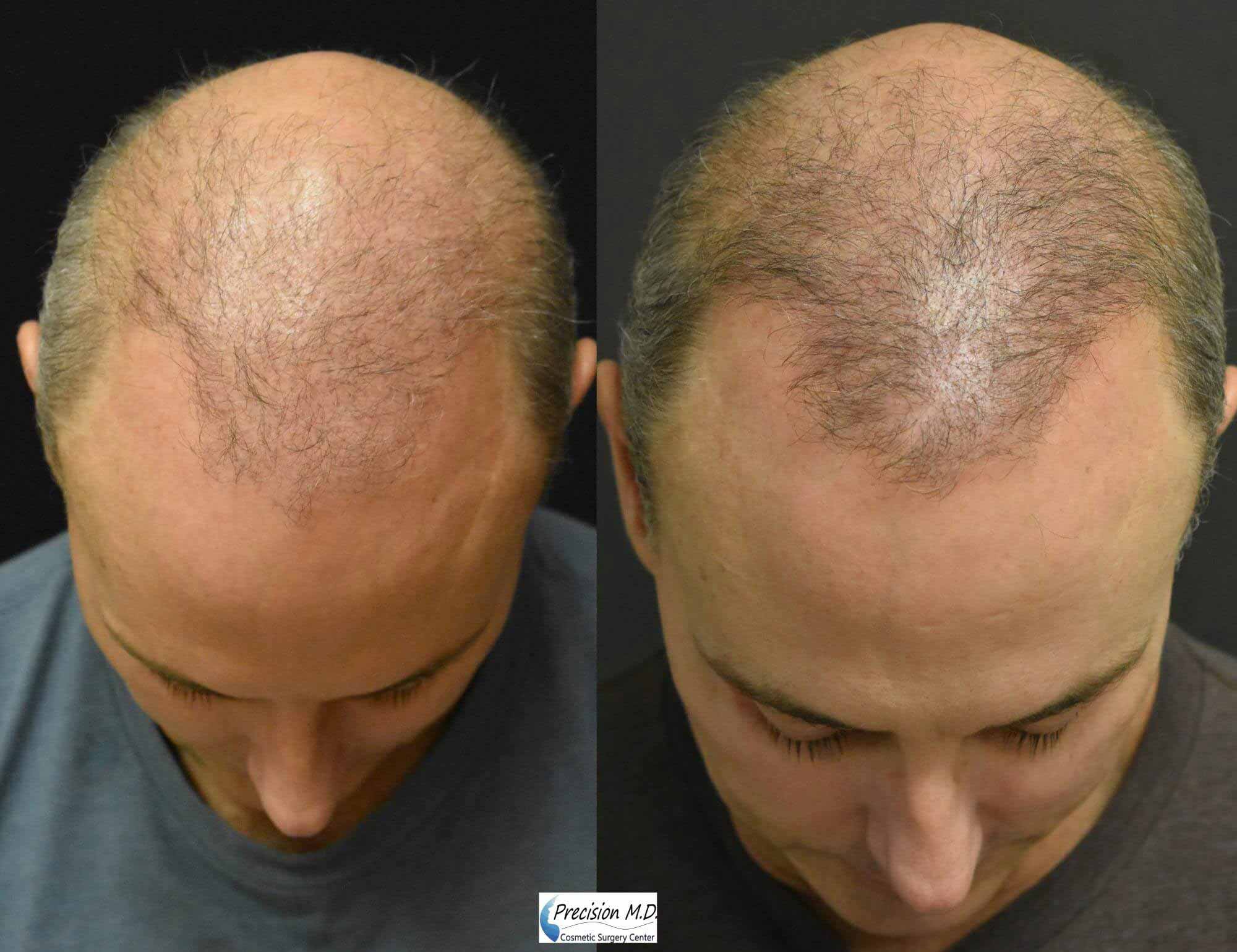Table Of Content

Platelet Rich Plasma, also known as PRP, is a relatively new addition to the list of hair loss treatments. The theory is this that platelets store growth factors to help stimulate wound healing and tissue growth where it is needed. If you take a patient’s own platelets and re-inject them into an area that needs healing and growth, the body’s own mechanisms will improve the regeneration of the tissue.
PRP for hair loss: Does it work, and is it safe? - Medical News Today
PRP for hair loss: Does it work, and is it safe?.
Posted: Tue, 10 Sep 2019 07:00:00 GMT [source]
Hair Loss Got You Down? Platelet-Rich Plasma May Regrow It
After receiving PRP treatment, a person can usually return to their regular activities without any limitations. Researchers theorized that if they could extract concentrated platelets and inject them into damaged areas of the body, they could accelerate healing. To understand how PRP works, it is important to be aware of the role that platelets play in healing.
Does Microneedling for Hair Loss Work? - Real Simple
Does Microneedling for Hair Loss Work?.
Posted: Thu, 10 Aug 2023 07:00:00 GMT [source]
Platelet-Rich Plasma (PRP) Injections for Hair Loss: What to Know Beforehand
The same is true of medications that doctors commonly use to treat androgenetic alopecia, such as topical minoxidil (Regaine) and oral finasteride (Propecia). When you have scalp injections for hair loss, you should not expect immediate results. It can take several weeks for PRP to stimulate growth from your hair follicles. For patients who have had long-term, ongoing hair loss prior to treatment, it may take even longer.
PRP for androgenetic alopecia
Friends, family members or an internist or primary care doctor are often helpful in suggesting the best surgeon. Aside from treating male pattern baldness, there isn’t a ton of research on PRP for hair growth, and it isn’t entirely conclusive. PRP injections may be able to treat a range of musculoskeletal injuries and conditions. The authors of an additional review of clinical studies, which the International Journal of Women’s Dermatology published, considered PRP to be a “promising” treatment for hair loss, based on their findings. While individual responses may vary, and optimal results often require multiple sessions.
Are there any side effects?
These sessions help reinforce the initial treatment’s effects and support ongoing growth and health. Our expert clinicians can give you personalised advice on whether PRP injections are right for you based on your clinical symptoms, medical history, and personal preferences. It’s been a few months since the treatment and after getting a haircut close to the scalp to track results, I have noticed some of the fine hairs we discussed seem to be trying to find their light. Knowing that I’m taking other precautions to keep my hair where it is gives me confidence that it isn’t something I’ll have to worry about anytime soon. As the centrifuge quietly hummed, Deirdre Murphy, the nurse who drew my blood, started to lay out small syringes that would be used to inject my own growth factor-full PRP back into my skull.
Different medical facilities use slightly different techniques for PRP therapy. For instance, some providers might suggest getting PRP injections more often than others. The PRP gets slurped up into a syringe without the other blood cells getting in the way. It also hasn’t been approved as a treatment by the Food and Drug Administration (FDA). However, famous athletes have been known to use these injections to help heal injuries.
In a Krager-published study from “Skin Appendage Disorders” by Alves Rubina, Grimalt Ramon, the history of the practice dates back to the 70s and is first used in the field of hematology, or the study of blood. PRP doesn’t deliver results immediately, so you shouldn’t expect to see a full head of hair overnight. You’ll likely need three monthly sessions followed by an appointment four to six months later, and then yearly maintenance sessions after that, Khetarpal says. You’ll likely start seeing regrowth before your third and fourth appointment, Khetarpal says. Historically, doctors have been able to stall or reverse hair loss by prescribing medicine or performing a hair transplant procedure, according to the American Academy of Dermatology.
Obtaining and injecting platelet-rich plasma
Some small, limited studies have found that certain supplements and shampoos could be helpful, dermatologists say. However, your best bet if you’re suffering from hair loss is to see a board-certified dermatologist who can determine what’s causing your alopecia and then recommend a treatment plan. Its effectiveness can vary from person to person due to factors such as the severity of Alopecia, individual response to treatment, and adherence to post-treatment care. While some patients may notice significant growth and density improvements within a few months of treatment, others may experience more gradual results.

Your Guide to PRP Scalp Injections for Hair Loss
PRP Hair Restoration is a fast and safe technique offering the most natural results compared to other hair loss procedures. Finally, keep in mind that the same healthy habits recommended for maintaining your physical health will also help your hair. Try to find ways to manage stress, and strive for a well-balanced diet that includes plenty of fruits and vegetables. If you have alopecia, you can help hold onto your tresses by avoiding behaviors that are known to contribute to temporary and permanent hair loss, Mirmirani says. “As soon as you notice hair loss is happening, you should come in,” says Lauren Eckert Ploch, a dermatologist in Aiken, South Carolina.
Consistency is key when it comes to getting PRP injection hair treatment. If you follow the treatment schedule outlined by our Forefront dermatologists, you should see results within three to six months. Decreased hair shedding is one of the results that patients notice first, followed by early hair regrowth and increased hair length. Blood flow, hormones, age, and gender are just a few of the variables that can impact when results first appear and how noticeable they are. Getting into the weeds of hair loss and hair restoration could send us off into a tangent worthy of its own article (of which we have plenty already) so I will keep this short and simple. Though PRP to treat hair loss is relatively new, research has been promising.
Alopecia is a common concern for many individuals, impacting their confidence and self-esteem. While various treatments are available, Platelet-Rich Plasma (PRP) therapy has become a promising solution for combating alopecia. This article will delve into how PRP hair loss treatment works, shedding light on its mechanism of action and efficacy.
Platelet-rich plasma (PRP) is a substance that’s thought to promote healing when injected. From making comments about cancer to suggesting treatments that worked for friends facing hair loss, here are the top statements experts avoid voicing... You may see it offered as a service at a spa, but Rapaport says to be careful if a thorough consultation isn’t included. He says PRP can be dangerous if technicians are sloppy and aren’t using FDA-approved tubes or aren’t careful about making sure your blood — and only your blood — is injected. According to the FDA, “off label” means that while the drug or therapy is approved, it’s not approved for the use or diagnosis that your doctor may be recommending. In these cases, the FDA has determined that the drug’s potential benefits may outweigh its risks.

No comments:
Post a Comment